3 Habit Changes That Turn Sickness Into Health!
3 HABIT CHANGES THAT TURN SICKNESS INTO HEALTH! (ISSUE 99)
By Diane Gold
 We are often not aware of sickness habits or wellness habits. For the most part, when we’re sick, we are consumed with feeling sick. Hopefully, you can’t relate to this feeling, but most of us can and do. And when we are well, we are not thinking about sickness.
We are often not aware of sickness habits or wellness habits. For the most part, when we’re sick, we are consumed with feeling sick. Hopefully, you can’t relate to this feeling, but most of us can and do. And when we are well, we are not thinking about sickness.
When sick, we can be dizzy, nauseated, have pressure in our head, be too hot, too cold, be perspiring, achy and itchy. Along with that, we are often anxious that we are sick, especially if we and our health professionals cannot diagnose us.
 So far, the only times I have been sick have happened in the past couple of years since I turned 60. And both times, my “specialist” physicians could give me no definitive cause for what I was feeling. That did prompt me to pine for a non-fiction version of Dr. House, MD, the TV series diagnostician, extraordinaire and gave me a bit of anxiety. I even wrote an article about it which you can access at the end of this article.
So far, the only times I have been sick have happened in the past couple of years since I turned 60. And both times, my “specialist” physicians could give me no definitive cause for what I was feeling. That did prompt me to pine for a non-fiction version of Dr. House, MD, the TV series diagnostician, extraordinaire and gave me a bit of anxiety. I even wrote an article about it which you can access at the end of this article.
HABIT A) DROOPING HEAD
When we are sick, we are hiding from the world; light may hurt our eyes. We, like toddlers, think that if we are not looking up, the sickness we are experiencing will disappear. When we’re dizzy, as I have been for a good five days, we’re looking for some relieving position. So, anything goes. Or does it?
When we drop the head, we may cause the airway (the trachea) to become compressed, although, the cartilage around it ultimately protects it. The neck becomes strained because the head is not being supported correctly by the neck muscles, and the head is weighty.
ONLINE RESEARCH
I discovered a video this past week when, not being able to get an appointment with an ear, nose and throat specialist, I needed a do-it-myself how-to video on the repositioning technique for dizziness.
The maneuver, specifically for the diagnosis, Benign Paroxysmal Positional Vertigo, BPPV, with which I have not been diagnosed (yet), requires the patient to turn the head in a specific way for a few minutes and then keep the head straight, in one position, for 48 hours.
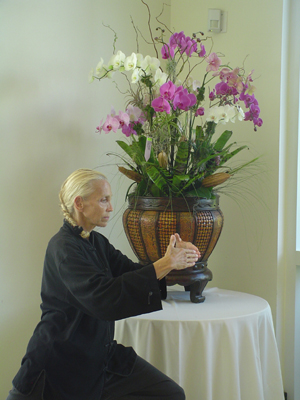 What I realized immediately was that the position of the proposed 48-hour position of the head was the suspended head position we teach in tai chi that brings stability to the region, allows the most oxygen to freely flow to the lungs, taxes the neck less than any other position and allows the most alertness and focus. It maintains tai chi principle by keeping the bones and body in proper alignment. It turns out it also helps to alleviate dizziness.
What I realized immediately was that the position of the proposed 48-hour position of the head was the suspended head position we teach in tai chi that brings stability to the region, allows the most oxygen to freely flow to the lungs, taxes the neck less than any other position and allows the most alertness and focus. It maintains tai chi principle by keeping the bones and body in proper alignment. It turns out it also helps to alleviate dizziness.
What did I realize? That because I was sick, my head was drooping in that “woe is me” posture and causing more sickness than health and maneuver immediately brought more air flow to me through realignment.
Picture a bobblehead on a dashboard in a 1960’s movie. In the old days, the head would be able to vibrate because a very springy wire connected the head to the body. Now, more durable plastic is used, and there’s less visible separation between the head and the body. But the trachea of this imaginary bobblehead person was never compressed because the head could not tilt forward. The spine of this imaginary person could not be compressed because the head could not tilt backwards. It could only maintain one position, that of maximum alignment and the most stability to the neck region. I stayed in the position for at least four hours and felt good, realizing that drooping my head had been slowing my healing.
ACTION STEPS

1) Aim the top of the head toward the ceiling, and keep it there throughout these steps.
2) Pull the head back from the lower hairs of the rear of the neck without tilting the head as if avoiding a sharp object pointed at the front of the center of the neck.
3) Notice how that position feels good.
4) Notice a freedom of the circulation of air in the body.
5) Notice whether quick turns add to discomfort, and be slow.
6) When you find you are slumping the head, go back to placing the head in the suspended head position again. Be diligent.
HABIT B) NOT EATING OR DRINKING
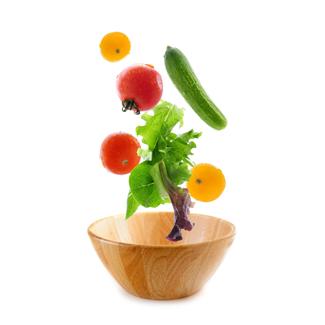 When we are sick, we may be nauseated, and we may not feel hungry. If we don’t eat, unfortunately, we will deplete our body nutrients.
When we are sick, we may be nauseated, and we may not feel hungry. If we don’t eat, unfortunately, we will deplete our body nutrients.
Many people who want to lose weight think that during sickness is a fabulous time not to eat because the body will consume less calories and come out skinnier. Sounds like a plan, but no, it is not a good one.
The body needs what it needs. Feeling or not feeling like giving nourishment to it has nothing to do with the fact that the body needs what it needs. Yes, our bodies are sensitive if we feed them well; and the body may tell us when it demands less. But, when we feel sick, our immune system is telling us to maintain foods that enhance it, like green leafy, alkalizing wheatgrass and cruciferous veggies, citrus fruits, antioxidants, vitamin E, zinc, echinacea, tea and good, old carbs for fuel.
Reduction dieting is best during wellness.
ACTION STEPS
1) Drink one glass of water every hour or so. If it is difficult to get it down, keep drinking as much as possible. Hydration helps the body heal Keep it to a minimum of one glass every three hours, if you are having trouble with the recommended amount.
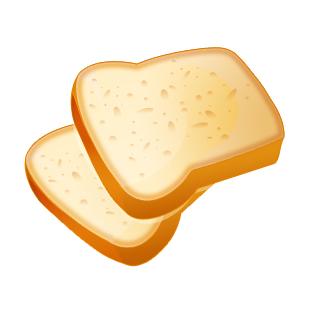 2) If you have the energy, eat normally. It’s easier if you have someone who will provide food for you while you rest. It may be necessary to purchase or have someone purchase foods that are partially or fully prepared for you, if getting up to prepare food is not an option. If you’re on your own, make sure to eat two pieces of Ezekiel bread with olive oil on them, if possible. Accompany this with at least one full glass water. Two is better if you can handle it.
2) If you have the energy, eat normally. It’s easier if you have someone who will provide food for you while you rest. It may be necessary to purchase or have someone purchase foods that are partially or fully prepared for you, if getting up to prepare food is not an option. If you’re on your own, make sure to eat two pieces of Ezekiel bread with olive oil on them, if possible. Accompany this with at least one full glass water. Two is better if you can handle it.
HABIT C) SHOULDER SLUMP
When we are sick, we tend to slump. We may feel we don’t have the energy to hold ourselves up. This is because we are expending our energy on the pain, suffering, oddness we feel and posture is our last concern.
This results in back strain as we are folding in our spine. A bigger result is that our oxygen flow is limited. Of course, the stronger our lungs are, the better our air will circulate. But, if we are crunching up the body, we are making it harder for our lungs to do their job. Though we may think it’s the most relaxed position, it’s not the most healthy.
ACTION STEPS
We’ve all seen those distinguished grannies and gramps who we know are sick but show the picture of health so as not to worry the young ones or be a burden.
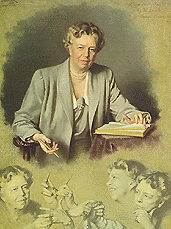 1) Be those distinguished figures: not for the purpose of making impressions for the sake of others. No, when you’re sick, it’s about getting healthy. And it’s about healing by taking on the persona of those who have gone before.
1) Be those distinguished figures: not for the purpose of making impressions for the sake of others. No, when you’re sick, it’s about getting healthy. And it’s about healing by taking on the persona of those who have gone before.
2) Straighten that spine, even if you’re doing so in bed. I have taught many people who could not get out of bed. It’s a great place to work out, whether it’s physical or mental. Picture that the more you stretch it, the more you will heal yourself. It’s true.
CONCLUSION
Hopefully, we will be more healthy than sick. There is a vast amount of digital research available to us that might be beneficial to review. Discussing what we find with a medical professional is always preferable, if possible, but, until that time, reading information may offer relief, as it did with me.
The habit changes are not new revelations. However, when we are feeling off, sick, terrible, pain or dizzy; we may forget the body principles we know to be healthy for us.
We know to keep our head in an erect position. We know to nourish and hydrate. We know to maintain a straight spine. During times of body stress, such as sickness, we need to train ourselves to be conscious of these things. Probably every time we are sick, we must be aware, since the discomfort will pull us away from what we know to be healthy.
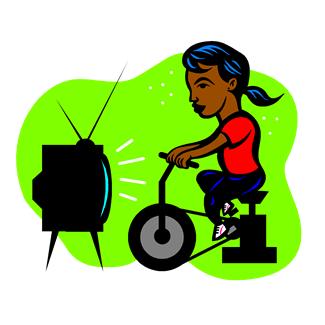 May we all have more healthy days than sick, and may we take responsibility for turning sickness into health.
May we all have more healthy days than sick, and may we take responsibility for turning sickness into health.
As promised, here’s the link to the article Looking For Dr. House: http://snurl.com/dr_house, for your information.
____________________________________________________________________
FEEDBACK
Please leave a comment and LIKE.
DIANE GOLD, AUTHOR
Diane Gold, Founder of Warriors of Weight, Turning Habits Into Health, is a mentor in tai chi, kung fu and meditation, a music, fitness and stress expert, dedicated mom, studying plant-based nutrition and habit change.
She believes it is our responsibility to act on behalf of our own health. She says,
“Whether we have the best medical professional or not, unless we pay for concierge medical service, we do not have instant access to her/him. When we become sick, it’s our duty to ourselves to work on our own behalf. There are many things we can do to help ourselves. It’s our responsibility to do them.
“When we wait, we should develop the ammunition of knowledge necessary to protect our bodies as best we can on our own. Posture and nutrition are always a part. Hopefully the three simple habit changes mentioned here can impact the way we treat ourselves and inspire us to turn our sickness into health.”







